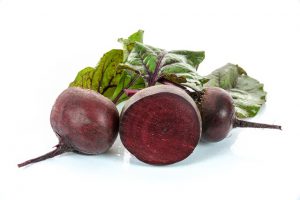
Nov 09, 2023
Unlocking the Power of Sulforaphane Foods
Nature’s Wisdom Waits Untapped
Mounting metabolic mayhem motivates queries into primordial plant potencies. Tracing origins, researchers resurrect remedies hiding in plain sight, as broccoli’s boon bodes hope against diabetes’ bloom. Though traditions touted, treasures passed unproven, visionaries piece connections crafting cures through cross-domain cooperations.
Studies unmask curative compounds long veiled as screening software sifts databases disciples compiled. Sulforaphane starts scrutiny, a crucifer endowing greens potency against cellular harm. Swedish scientists sally clinical trials’ vanguard, braving risks to render rigorous results whereby nature’s nanopharmacy stands revealed. Shocking successes spark further foraging where few explored deeply, bearing gifts future laboratories may shape for broader benefit.
Brocolli Bioactives Benchmark Metformin
The intersection of broccoli bioactive and the benchmark drug metformin presents a fascinating journey into the realm of alternative medicine and the potential for harnessing the power of nature to combat diabetes and obesity-related health issues.
In double-blind tests, volunteers are given a choice between two regimens: a concentrated broccoli extract enriched with sulforaphane, a bioactive compound found in broccoli, or the default diabetic drug, metformin. The astonishing revelation that unfolds through these trials is the striking similarity in the regulation of blood sugar levels in both groups. This unexpected outcome sheds light on the potency of the extracted compound, sulforaphane, which competes head-to-head with the effects of the pharmaceutical metformin among participants who have been historically challenging to treat.
What makes this discovery even more intriguing is the absence of adverse side effects associated with the natural broccoli extract. In contrast to pharmaceutical drugs, which often come with a laundry list of potential side effects, nature’s touch in the form of sulforaphane appears to recalibrate sugar levels without any toxicity, offering a gentler and more holistic approach to addressing the underlying pathology of obesity and the pre-diabetes pandemic. This breakthrough is a testament to the potential of bioactive compounds found in common foods as a viable alternative to conventional drug therapy.
A crucial aspect of this revelation is the inherent prioritization of those who are most vulnerable to diabetes and obesity-related health issues. Nature seems to have custom-tailored its care to address the specific needs of individuals struggling with these conditions, reinforcing the concept of evolutionary nourishment. Broccoli, a seemingly unassuming vegetable, emerges as a powerful ally in the fight against these metabolic disorders, offering a ray of hope to countless individuals worldwide.
While the spotlight shines brightly on broccoli bioactives, it is essential to remember that this is just the beginning of our exploration of the potential of natural treatments for diabetes and obesity. Recent studies have indicated that wheat and berries, too, possess bioactive compounds that could further bolster the tolerability and effectiveness of these natural treatments. These compounds, when harnessed and utilized in conjunction with broccoli extracts, might pave the way for a comprehensive and well-rounded approach to managing these conditions.
As we witness the progress of patients who are embracing these natural remedies, it becomes apparent that our understanding of health and healing is evolving. The synergy between these healing herbs and the human body is a testament to the intricate relationship between nature and mankind. It is a reflection of the symbiosis that has sustained us through the ages, demonstrating how, within ourselves and the universe, we are part of a grand tapestry where each thread holds a unique significance.
More profound revelations continue to unfold as we delve into the world of bioactives and their impact on human health. These revelations instil a sense of stewardship for future generations, encouraging us to bear the imprints of our innovation and insight. The collaboration across various disciplines to optimize the essence of existence in a delicate balance is at the core of this paradigm shift. The fusion of ancient wisdom, modern science, and innovative research is opening new doors to understanding and harnessing the healing potential of nature.
In the quest to further unlock the potential of broccoli bioactives and their role in diabetes and obesity management, researchers and medical practitioners are embarking on a collective journey. This journey promises to bring forth new discoveries, alternative treatments, and a holistic approach to addressing these pressing health concerns. The power of nature, as exemplified by sulforaphane-rich broccoli, has shown us that we can draw inspiration from the past to shape a healthier, more balanced future for all.
Diverse Phytonutrients Beckon Discovery
The pursuit of diverse phytonutrients is an enthralling expedition into the vast world of natural compounds that hold the promise of revolutionizing our understanding of glycemic control and metabolic function. It is a journey that transcends geographical boundaries and cultural landscapes, weaving together the wisdom of different ecosystems to enrich our understanding of these vital health aspects.
Among the treasure trove of nature’s gifts, cinnamon emerges as a beacon of hope in the realm of glycemic governance. This aromatic spice, renowned for its culinary uses, possesses remarkable properties that can sensitize cells to regulate blood sugar levels better. Cinnamon’s ability to enhance insulin sensitivity has captured the attention of researchers and health enthusiasts alike, making it a fascinating subject of study. Its distinctive flavor and versatile applications in various cuisines make it a valuable addition to our dietary repertoire.
Asian mushrooms are another fascinating aspect of this exploration. These unique fungal wonders, abundant in the diverse ecosystems of Asia, have been found to contain bioactive compounds that play a crucial role in metabolic function. Mushrooms such as reishi, shiitake, and lion’s mane are teeming with potential benefits, from immune system support to glycemic control. The rich tradition of mushroom consumption in Asian cuisines further emphasizes their importance in holistic health.
The African continent contributes its own set of phytonutrients, particularly in the form of catechins. These compounds, found in various African plants and teas, have shown promise in regulating blood sugar levels and improving metabolic health. The diverse array of catechins in African flora invites a deeper exploration into their potential applications, both as culinary ingredients and as natural remedies.
One of the remarkable aspects of this journey is the realization that each ecosystem imparts unique signatures to the phytonutrients it offers. These signatures, in turn, sensitize our cells and enhance their ability to absorb these natural tinctures. This interplay between the environment and the human body is a testament to the intricate dance of nature, one that has evolved over millennia to harmonize with our physiological needs.
In a world where modernity often mars the ancestral sustenance that has nourished us for generations, the quest for diverse phytonutrients becomes even more critical. The gap between the nutritional wisdom of our forebears and the convenience of contemporary diets is a challenge that we must address. By embracing the traditional knowledge embedded in our cultures and combining it with modern scientific insights, we can forge a healthier and more balanced existence.
Diversity, both in the foods we consume and the sources from which we derive our phytonutrients, serves as a formidable shield against the shocks and challenges that the future may hold. It is through this diversity that we respect the planetary parameters that sustain life on Earth. The interconnectedness of ecosystems and the wealth of phytonutrients they offer underscore the importance of cooperation and curiosity in our pursuit of holistic health.
As we continue to unearth the hidden potential of these phytonutrients, may we remember the timeless wisdom of our ancestors. They, too, sought cures in the bountiful flora that surrounded them, understanding that nature held the key to well-being. The quest for healthier, more fulfilling lives is a journey that transcends time and culture. It is a shared endeavour that invites all to partake in the earth’s riches, seeking cures that are as delicious as they are definitive.
Sustenance, in all its forms, shows us the way forward in this grand exploration of diverse phytonutrients. It is a compass that points us toward a future where we draw strength from the past, where we follow the slow, revealing wisdom of nature’s offerings. In the colourful tapestry of our culinary traditions and the richness of our natural landscapes, we find the answers to questions that have intrigued and challenged us for generations. As we embark on this journey, let us remember that the path to discovery is as important as the destination and that the quest for diverse phytonutrients is a celebration of life’s intricate, ever-unfolding tapestry.
Sulforaphane Foods: Enhancing Cellular Health and Diabetes Care
The Role of Sulforaphane in Cellular Protection
The pursuit of diverse phytonutrients is an enthralling expedition into the vast world of natural compounds that hold the promise of revolutionizing our understanding of glycemic control and metabolic function. It is a journey that transcends geographical boundaries and cultural landscapes, weaving together the wisdom of different ecosystems to enrich our understanding of these vital health aspects.
Among the treasure trove of nature’s gifts, cinnamon emerges as a beacon of hope in the realm of glycemic governance. This aromatic spice, renowned for its culinary uses, possesses remarkable properties that can sensitize cells to regulate blood sugar levels better. Cinnamon’s ability to enhance insulin sensitivity has captured the attention of researchers and health enthusiasts alike, making it a fascinating subject of study. It is distinctive flavour and versatile applications in various cuisines make it a valuable addition to our dietary repertoire.
Asian mushrooms are another fascinating aspect of this exploration. These unique fungal wonders, abundant in the diverse ecosystems of Asia, have been found to contain bioactive compounds that play a crucial role in metabolic function. Mushrooms such as reishi, shiitake, and lion’s mane are teeming with potential benefits, from immune system support to glycemic control. The rich tradition of mushroom consumption in Asian cuisines further emphasizes their importance in holistic health.
The African continent contributes its own set of phytonutrients, particularly in the form of catechins. These compounds, found in various African plants and teas, have shown promise in regulating blood sugar levels and improving metabolic health. The diverse array of catechins in African flora invites a deeper exploration into their potential applications, both as culinary ingredients and as natural remedies.
One of the remarkable aspects of this journey is the realization that each ecosystem imparts unique signatures to the phytonutrients it offers. These signatures, in turn, sensitize our cells and enhance their ability to absorb these natural tinctures. This interplay between the environment and the human body is a testament to the intricate dance of nature, one that has evolved over millennia to harmonize with our physiological needs.
In a world where modernity often mars the ancestral sustenance that has nourished us for generations, the quest for diverse phytonutrients becomes even more critical. The gap between the nutritional wisdom of our forebears and the convenience of contemporary diets is a challenge that we must address. By embracing the traditional knowledge embedded in our cultures and combining it with modern scientific insights, we can forge a path to a healthier and more balanced existence.
Diversity, both in the foods we consume and the sources from which we derive our phytonutrients, serves as a formidable shield against the shocks and challenges that the future may hold. It is through this diversity that we respect the planetary parameters that sustain life on Earth. The interconnectedness of ecosystems and the wealth of phytonutrients they offer underscore the importance of cooperation and curiosity in our pursuit of holistic health.
As we continue to unearth the hidden potential of these phytonutrients, may we remember the timeless wisdom of our ancestors. They, too, sought cures in the bountiful flora that surrounded them, understanding that nature held the key to well-being. The quest for healthier, more fulfilling lives is a journey that transcends time and culture. It is a shared endeavor that invites all to partake in the riches of the earth, seeking cures that are as delicious as they are definitive.
Sustenance, in all its forms, shows us the way forward in this grand exploration of diverse phytonutrients. It is a compass that points us toward a future where we draw strength from the past, where we follow the slow, revealing wisdom of nature’s offerings. In the colourful tapestry of our culinary traditions and the richness of our natural landscapes, we find the answers to questions that have intrigued and challenged us for generations. As we embark on this journey, let us remember that the path to discovery is as important as the destination and that the quest for diverse phytonutrients is a celebration of life’s intricate, ever-unfolding tapestry.
Clinical Trials and Research on Sulforaphane:
The exploration of sulforaphane’s role in cellular protection has sparked a wave of clinical trials and research studies that hold the promise of revolutionizing our understanding of its potential benefits, particularly in managing diabetes and other metabolic conditions.
As the scientific community delves deeper into the properties of sulforaphane, numerous clinical trials and research endeavours are underway to unearth the full scope of its impact. These investigations are not limited to the laboratory but extend to real-world scenarios, where the efficacy of sulforaphane is being rigorously examined in human participants.
One of the primary objectives of these clinical trials is to determine the optimal dosage, duration, and form of sulforaphane supplementation. These factors play a pivotal role in harnessing the full potential of this bioactive compound. Researchers are meticulously fine-tuning the parameters to ensure that sulforaphane’s benefits are maximized and accessible to a broad spectrum of individuals.
Furthermore, scientists are keenly interested in understanding how sulforaphane affects various markers of glucose control, insulin sensitivity, and inflammation. These are critical factors in the context of diabetes and metabolic conditions, and any insight into sulforaphane’s ability to modulate them is invaluable. The results of these trials have the potential to reshape the landscape of treatment and prevention for these conditions.
What sets these trials apart is their rigorous methodology. They are designed as randomized, placebo-controlled trials, a gold standard in clinical research. This means that participants are assigned randomly to either a group receiving sulforaphane supplementation or a placebo group. The use of placebos helps eliminate biases and ensures that the results are truly reflective of sulforaphane’s effects. Such a stringent approach is crucial in establishing the validity and reliability of the findings.
By conducting these trials with human participants, researchers are bridging the gap between laboratory findings and real-world applications. While animal studies have offered valuable insights into the potential benefits of sulforaphane, human trials provide concrete evidence of its effectiveness in diverse populations. This is particularly important because individual responses to bioactive compounds can vary, and human trials take these variations into account.
The importance of this research extends beyond the realm of science. It has the potential to transform the way we approach metabolic conditions like diabetes. Instead of relying solely on conventional treatments, often with side effects and limitations, sulforaphane represents a natural, non-toxic alternative that could revolutionize disease management.
As we await the results of these clinical trials, the anticipation within the scientific community is palpable. The potential benefits of sulforaphane in managing diabetes and metabolic conditions hold the promise of not only improving the lives of millions but also reducing the burden on healthcare systems. Moreover, the growing body of evidence in favour of sulforaphane serves as a testament to the power of nature in addressing complex health issues.
In this journey of exploration, collaboration between scientists, healthcare professionals, and individuals with metabolic conditions is essential. The shared goal is to unlock the full potential of sulforaphane in cellular protection, turning it into a formidable ally in the fight against diabetes and related disorders. The fusion of modern medical knowledge and ancient wisdom regarding the use of natural compounds underscores the importance of interdisciplinary cooperation in achieving optimal health.
In conclusion, the clinical trials and research on sulforaphane represent a beacon of hope for those grappling with diabetes and metabolic conditions. The rigorous and meticulous approach of these trials, combined with their real-world focus, is paving the way for a future where sulforaphane may take center stage in disease management. The journey is ongoing, and as we await the results, we are reminded of the boundless potential that nature, when harnessed through scientific inquiry, holds for humanity’s well-being.
Comparing Sulforaphane to Diabetic Drugs:
The comparison of sulforaphane with conventional diabetic drugs like Metformin has unveiled a compelling narrative in the field of diabetes management. Through rigorous comparative studies, the potential of sulforaphane has emerged as a formidable contender, offering new perspectives on how we approach this complex condition.
One such study, marked by its promising results, discovered that sulforaphane extract can produce reductions in fasting blood sugar levels similar to those achieved by Metformin, a well-established diabetic drug. This revelation is not just a testament to sulforaphane’s efficacy but also a significant milestone in the pursuit of alternatives or complementary treatments for diabetes.
Intriguingly, sulforaphane doesn’t stop at blood sugar control. It extends its impact to vital aspects of diabetes management by enhancing insulin sensitivity and reducing insulin resistance. These factors play a pivotal role in diabetes, where the body’s ability to utilize insulin effectively is compromised. Sulforaphane’s ability to improve these factors marks it as a holistic agent in diabetes care.
For individuals with diabetes, the discovery of sulforaphane’s potential offers a ray of hope, particularly for those who may face challenges in tolerating or responding to standard medications. This alternative perspective underscores the importance of individualized treatment in diabetes care. What works for one person may not work for another, and the inclusion of sulforaphane as an option or complement to existing treatments enriches the choices available.
The road ahead is one of exploration and refinement. As we delve deeper into the potential of sulforaphane, we must continue to compare and contrast its effects with established treatments, forging a path that is marked by inclusivity and adaptability. The discovery of sulforaphane’s potential in the realm of diabetes management underscores the dynamic nature of medical research and the promise it holds for improved well-being.
Personalized Medicine and Targeting Vulnerable Populations:
The concept of personalized medicine is akin to tailoring a suit, but in this case, the suit is a healthcare plan, and it’s uniquely designed to fit the individual. When it comes to leveraging the potential of sulforaphane and other natural treatments, the promise lies in personalization, and this approach has the potential to be a game-changer for vulnerable populations, notably those grappling with obesity and prediabetes.
Obesity and prediabetes are complex health challenges. Those affected often struggle to manage their blood sugar levels and face an elevated risk of developing complications related to diabetes. In this context, sulforaphane emerges as a beacon of hope. Its capacity to enhance glucose regulation and mitigate inflammation holds particular promise for these vulnerable groups.
The beauty of personalized medicine is in recognising the individual’s uniqueness. Factors like body weight, baseline glucose levels, and genetic predispositions come into play. Healthcare professionals armed with this knowledge can fine-tune treatment strategies that make the best use of sulforaphane’s potential. The goal is not just to address the general attributes of a condition but to zoom in on the specifics of each person’s health, crafting solutions that fit them like a bespoke garment.
In this age of healthcare, it’s about leaving the one-size-fits-all approach behind and embracing the precision of personalization. It’s the embodiment of the saying, “one size fits one.” It’s a shift from broad strokes to intricate brushwork, from general guidelines to individualized roadmaps.
As we journey forward, it’s imperative to consider the diverse needs of these vulnerable populations, recognizing that their challenges are unique. By embracing personalized medicine and harnessing the power of sulforaphane, we offer a lifeline to those who need it the most. It’s an approach that not only treats health conditions but respects the individual and the intricacies of their well-being. In this paradigm, sulforaphane is not just a treatment; it’s a tailored remedy, a beacon of hope, and a testament to the future of healthcare.
Bioavailability and Enhancing Nutrient Absorption:
The quest for unlocking the full potential of sulforaphane, a bioactive compound found in foods like broccoli and sprouts, delves into the realm of bioavailability and nutrient absorption. While these cruciferous vegetables are rich sources of sulforaphane, the effectiveness of sulforaphane can vary based on how it is consumed and prepared.
One of the strategies to enhance nutrient absorption is to prepare cruciferous vegetables in a manner that maximizes the bioavailability of sulforaphane. Lightly steaming or cooking these vegetables, for example, can break down the cell walls and release the compound, making it more readily absorbed by the body. Moreover, pairing sulforaphane-rich foods with a source of healthy fats can further enhance its absorption since sulforaphane is fat-soluble.
In addition to culinary practices, researchers are tirelessly exploring innovative techniques to extract and stabilize sulforaphane for use in supplements. The goal is to preserve the bioactivity of the compound and improve its absorption within the body. Specific processing methods are employed to ensure that the sulforaphane remains potent and bioavailable, even in supplement form. This opens up new avenues for those who may not have access to fresh sulforaphane-rich foods.
By addressing the issue of bioavailability and enhancing nutrient absorption, we can unlock the full range of potential health benefits that sulforaphane offers. The synergy between culinary practices and scientific innovation ensures that this bioactive compound can be harnessed to its fullest extent, ultimately benefiting individuals seeking to optimize their well-being. As the journey into the world of sulforaphane continues, it is essential to keep the focus on maximizing its bioavailability and absorption, ultimately paving the way for a healthier and more vibrant future.
The Synergistic Effects of Phytonutrients
The exploration of the synergistic effects of phytonutrients opens up a fascinating world of possibilities where the sum is truly greater than its parts. These natural compounds, derived from various sources like cinnamon, Asian mushrooms, and African catechins, not only offer many individual health benefits but also work in harmony when consumed together, amplifying their positive impact on our well-being.
Cinnamon, for instance, contains the bioactive compound cinnamaldehyde, which is known to improve insulin sensitivity. This remarkable property alone makes it a valuable addition to one’s diet. However, when combined with other phytonutrients from different sources, such as Asian mushrooms and African catechins, its effects can become even more potent.
Asian mushrooms like shiitake and reishi are rich in polysaccharides, which have been linked to enhanced immune function and a reduction in inflammation. When these mushrooms are integrated into the dietary mix, their benefits add another layer of support to metabolic health, creating a multifaceted approach to overall well-being.
African catechins, as found in teas like Rooibos, have garnered attention for their potential to improve glucose metabolism. When combined with the phytonutrients from cinnamon and Asian mushrooms, a robust synergy emerges, further bolstering the body’s ability to regulate blood sugar levels and maintain metabolic equilibrium.
The beauty of this approach lies in its inclusivity. By incorporating a variety of phytonutrient-rich foods into one’s diet, individuals can access the collective benefits of these compounds. It’s akin to creating a symphony of health, where each instrument plays its unique role, but together they produce a harmonious melody of well-being.
This concept aligns with the wisdom of diverse and balanced diets that have been celebrated in various cultures for centuries. Traditional cuisines often incorporate a wide range of ingredients from different food groups, ensuring that individuals receive a broad spectrum of nutrients and bioactive compounds. The modern understanding of phytonutrients and their synergistic effects reinforces the importance of maintaining such dietary diversity.
As research continues to unravel the intricate relationships between these phytonutrients, it becomes evident that the path to optimal metabolic health is one of variety and inclusion. It’s about celebrating the richness of our culinary traditions and the abundance of nature’s offerings.
Moreover, this approach highlights the interconnectedness of various cultural diets. Whether it’s the spices of Asia, the mushrooms of the East, or the teas of Africa, these phytonutrients transcend geographical boundaries and cultural landscapes. They are a reminder that, in our quest for well-being, we are more alike than different, and the collective wisdom of our global heritage can guide us toward healthier and more balanced lives.
In the tapestry of phytonutrients and their synergistic effects, the future holds the promise of innovative dietary approaches that fuse the wisdom of our ancestors with the discoveries of modern science. This collaborative effort between different cultures and scientific disciplines marks an exciting chapter in the ongoing journey of understanding and optimizing metabolic health. It is a journey where each plate of food becomes a palette of phytonutrients, painting a vibrant picture of wellness for all who partake.
Sustainable Agriculture and Biodiversity
The profound connection between the exploration of natural treatments such as sulforaphane and sustainable agriculture practices and biodiversity is a testament to the interwoven tapestry of human health and the environment.
Cultivating a diverse range of crops within sustainable agricultural systems is not only a choice but a necessity in today’s world. This approach promotes ecological resilience, reducing the risks associated with monocultures and safeguarding the natural compounds found in various plant species. Biodiversity in agriculture translates into resilience in the face of changing climates, pests, and diseases. It ensures that even if one crop faces challenges, others can thrive, preserving the nutritional richness of our food supply.
Incorporating sustainable farming practices like organic farming and regenerative agriculture contributes significantly to the long-term health of our planet and our bodies. Organic farming methods reduce the reliance on harmful pesticides and herbicides, protecting the soil, water, and the intricate web of life that sustains us. Regenerative agriculture goes a step further, aiming to restore and revitalize ecosystems while simultaneously yielding nutritious and biodiverse crops.
Supporting local farmers who champion diverse crops and sustainable practices is an essential step in this journey. These farmers play a pivotal role in ensuring the availability and accessibility of foods rich in beneficial compounds like sulforaphane. By strengthening local food systems, we create a more resilient and sustainable future.
The symphony of biodiversity in both our environment and our diets is an ode to the interconnectedness of life. As we explore the potential of natural treatments, we must also take on the role of stewards of our planet. The preservation of biodiversity and sustainable agriculture practices is not just an ecological imperative; it is a prescription for long-lasting health and well-being for generations to come.
Integrative Approaches to Healthcare
Integrative approaches to healthcare represent a dynamic fusion of conventional medical treatments with the potent potential of natural therapies like sulforaphane. This harmonious blend aims to create a synergy that optimizes patient outcomes and provides a more comprehensive and holistic approach to care. As the medical landscape evolves, recognizing the value of integrating natural compounds such as sulforaphane into the realm of diabetes management becomes pivotal.
By embracing integrative approaches, healthcare professionals can tailor treatment plans that cater to the unique needs of each individual. This personalized approach acknowledges the myriad ways in which sulforaphane and other natural therapies can positively impact health and well-being. Rather than a one-size-fits-all solution, integrative approaches offer flexibility and adaptability in addressing the complex and individualized nature of health conditions.
Interdisciplinary collaboration takes centre stage in integrative healthcare. Healthcare professionals from different disciplines, including conventional medicine practitioners, nutritionists, and naturopaths, come together to craft comprehensive treatment strategies. This collaboration fosters open communication and knowledge sharing, ensuring that the collective expertise of the healthcare community is harnessed for the benefit of patients. It is within these diverse perspectives and expertise that the true potential of natural treatments like sulforaphane is realized, unlocking novel avenues for enhancing patient outcomes.
The future of healthcare embraces the fusion of the old and the new, the conventional and the natural. Integrative approaches not only recognize the benefits of sulforaphane but also weave them into a tapestry of care that nurtures the patient’s holistic well-being. The journey forward is one of collaboration, customization, and a profound understanding of the interplay between science and nature, where each patient becomes a unique canvas upon which health and vitality are artfully painted.
Cultural and Traditional Wisdom
The alliance of cultural and traditional wisdom with modern scientific research is a vibrant journey that holds the key to unlocking the full potential of natural compounds such as sulforaphane. Throughout history, various cultures have revered plant-based remedies as cornerstones of their healing traditions. Systems like Ayurveda in India and Traditional Chinese Medicine have long recognized the therapeutic properties of plants, harnessing their wisdom to address a myriad of health conditions.
Recently, the bridge between ancient practices and modern science has grown stronger. Rigorous scientific investigations are now substantiating the once mystical and anecdotal benefits of plant-based remedies. The integration of traditional wisdom with empirical evidence not only validates the effectiveness of these remedies but also uncovers the intricate mechanisms underlying their actions. This convergence of knowledge is akin to illuminating the age-old secrets of nature’s pharmacy.
Cultural and traditional contexts provide a rich tapestry of understanding in the utilization of natural compounds like sulforaphane. They offer insights into the appropriate use, dosages, and potential interactions handed down through generations. This cultural sensitivity is crucial in guiding modern research and healthcare practices, ensuring that the healing potential of natural compounds is harnessed respectfully and effectively.
The amalgamation of ancient wisdom and contemporary science is a profound manifestation of holistic healthcare. Researchers and healthcare professionals, by weaving together the threads of cultural and scientific knowledge, create a fabric of comprehensive and culturally sensitive approaches to well-being. It is a testament to the enduring power of human wisdom and our unceasing quest for a healthier future.
Future Directions and Collaborative Research
The journey of exploring sulforaphane and other natural compounds is an ongoing odyssey, and the horizons of discovery are as boundless as the natural world itself. In scientific exploration, there is always more to unearth, and the enigma of sulforaphane continues to beckon researchers and enthusiasts.
Looking ahead, the future of research endeavours should be marked by an unwavering commitment to unravelling the intricate mechanisms of action that underlie sulforaphane’s potential. This endeavour entails delving into the depths of molecular biology to grasp how sulforaphane interacts with our cells and influences their behaviour. By understanding these precise mechanisms, we can unlock the full potential of sulforaphane and harness it for many health conditions.
Collaboration stands as the cornerstone of the future of sulforaphane research. Scientists, nutritionists, and healthcare professionals must join forces to expedite progress. Sharing knowledge, resources, and expertise creates a synergy that can drive forward our understanding of sulforaphane’s role in promoting health. It’s through such collaboration that we can conduct more extensive and rigorous studies, addressing critical questions about the optimal dosage, delivery methods, and the long-term effects of sulforaphane.
Moreover, interdisciplinary partnerships can illuminate potential synergies between sulforaphane and other natural compounds. This exploration is akin to discovering the harmonious notes in a symphony, where different elements come together to create something greater than the sum of its parts. The possibility of combining sulforaphane with other bioactive compounds opens doors to innovative therapeutic interventions.
As we navigate this path of research, we must remain steadfast in our commitment to sustainability, ethical sourcing, and equitable access to natural treatments. The essence of nature’s gifts lies in their interconnectedness and the balance they maintain in our world. Our responsibility is to ensure that our pursuit of knowledge does not harm the delicate ecosystems that provide us with these treasures. Ethical sourcing practices and a commitment to preserving biodiversity are essential in this regard.
Equally vital is the principle of equitable access. The benefits of sulforaphane and other natural compounds should not be confined to a select few. It is our moral imperative to ensure that these treatments are accessible to all, regardless of their socioeconomic background. This inclusive approach ensures that everyone can benefit from the wisdom of nature.
In the journey towards understanding sulforaphane, we must keep our eyes on the horizon. The potential applications of this bioactive compound are limitless, and its role in cellular protection represents a mere fraction of what it may offer. By embracing collaboration, rigorous research, and ethical values, we can look forward to a future where sulforaphane and other natural compounds play a pivotal role in reshaping the landscape of health and well-being for all. As explorers of a new age, we must honour the past, cherish the present, and protect the future, all while unravelling the mysteries of sulforaphane and the natural world surrounding us.
Sulforaphane Foods: Considerations and Risks
Sulforaphane extract from cruciferous vegetables like broccoli and sprouts is generally considered safe when consumed as part of a regular diet. However, as a concentrated extract or supplement, there may be some considerations regarding potential side effects or risks. It’s important to note that specific research on sulforaphane extract supplements is limited, and much of the available information is based on studies using whole foods or animal models. Here are a few points to consider:
1. Gastrointestinal Issues: Some individuals may experience digestive symptoms such as bloating, gas, or an upset stomach when consuming high doses of sulforaphane extract. These symptoms are usually mild and transient, but it’s essential to monitor your body’s response and adjust the dosage accordingly.
2. Interaction with Medications: Sulforaphane may interact with certain medications, including blood thinners or antiplatelet drugs, due to its potential antiplatelet and anticoagulant effects. If you are taking any medicines, especially those with potential bleeding risks, it’s essential to consult with a healthcare professional before adding sulforaphane extract to your routine.
3. Thyroid Function: Sulforaphane may affect thyroid function by inhibiting iodine uptake, which could potentially interfere with the production of thyroid hormones. Individuals with thyroid disorders or those taking thyroid medications should exercise caution and consult with a healthcare professional before using sulforaphane extract supplements.
4. Allergic Reactions: While rare, some individuals may be allergic to sulforaphane or other compounds present in cruciferous vegetables. If you have a known allergy to these vegetables, it’s important to avoid sulforaphane extract or consult with an allergist before using it.
As with any dietary supplement, it’s advisable to consult with a healthcare professional before incorporating sulforaphane extract into your diabetes management regimen. They can provide personalized guidance, considering your medical history and any potential interactions with medications you may be taking.
It’s also worth noting that a well-balanced diet rich in whole fruits and vegetables, including cruciferous vegetables, can provide a natural source of sulforaphane along with various other beneficial compounds. Incorporating these foods into your diet may offer similar benefits without the need for concentrated extracts or supplements.
Latest Insights: Sulforaphane’s Impact on Diabetes Management
Cabbage, particularly broccoli, is a good source of sulforaphane, a sulfur-rich compound studied for its potential health benefits, including anti-inflammatory and anti-cancer properties. However, the sulforaphane content can vary depending on the type of cabbage and how it’s prepared.
Regarding blood sugar control, some research suggests that sulforaphane may have beneficial effects. A study published in the journal “Science Translational Medicine” in 2017 found that sulforaphane reduced fasting blood glucose levels and improved glycemic control in obese patients with dysregulated type 2 diabetes. The study suggested that sulforaphane might inhibit hepatic glucose production and improve glucose control, offering a new therapeutic strategy for type 2 diabetes.
Broccoli juice, a good source of sulforaphane, could have similar benefits. However, more research is needed to fully understand the effects of sulforaphane and broccoli juice on blood sugar control and how they might be used to manage diabetes.
It’s important to note that while these foods can contribute to a healthy diet, they should not replace conventional treatments for diabetes or any other condition. Always consult a healthcare provider before making significant changes to your diet or treatment plan.
Here are some references to studies on sulforaphane and blood sugar control:
1. Axelsson, A. S., Tubbs, E., Mecham, B., Chacko, S., Nenonen, H. A., Tang, Y., … & Wu, J. (2017). Sulforaphane reduces hepatic glucose production and improves glucose control in patients with type 2 diabetes. Science translational medicine, 9(394), eaah4477.
2. Bahadoran, Z., Mirmiran, P., & Azizi, F. (2013). Potential efficacy of broccoli sprouts as a unique supplement for management of type 2 diabetes and its complications. Journal of medicinal food, 16(5), 375-382.
3. Li, Y., Zhang, T., Korkaya, H., Liu, S., Lee, H. F., Newman, B., … & Sun, D. (2010). Sulforaphane, a dietary component of broccoli/broccoli sprouts, inhibits breast cancer stem cells. Clinical Cancer Research, 16(9), 2580-2590.
Further Topics of interest

Glucose Syrup vs. Corn Syrup: A Sweet Showdown

Which of the Following Is True of Portfolio Diversification?

Early Retirement Extreme Summary: Facts Minus the Fluff

Considering the Impact of Inflation, Why Is Investing Important for Long-Term Financial Stability?

Why is Investing a More Powerful Tool to Build Long-term Wealth Than Saving

Beetroot Benefits for Men: Extraordinary Potential, Humble Root

Best Saffron Supplement: Unveiling its Tantalizing Health Benefits

Milk Thistle for Dogs: Unveiling the Enigma of Canine Well-being

Revealing the Hidden Dangers: Toxic Ingredients in U.S. Foods

Fully Hydrogenated Oil: Tasty Threats With Deadly Effects

Restoring Vision: Exploring Hypotheses for Vision Rehabilitation

Rediscover Vitality: Age Defying Strength with Mumio Supplement

Inductive vs Deductive Arguments: Strategies for Sound Reasoning

Restoring Vision Naturally: Uncomplicated and Effective Solutions

Alpha-Ketoglutarate: Pinnacle of Vitality for Longevity and Optimal Health
Demystifying the Stock Market Fear and Greed Index
Embracing Challenges, Seizing Opportunities: Investing in China


